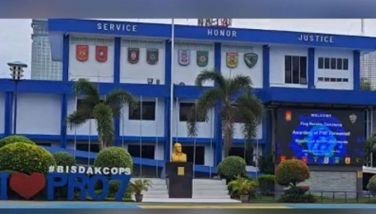DENR says: Trees in Central Visayas depleting
CEBU, Philippines- Trees in Central Visayas are depleting due to illegal cutting and timber harvesting, among others, according to the Department of Environment and Natural Resources-7.
In fact, DENR-7 recently confiscated in Mandaue City 64 pieces of furniture made of Moncono (Xanthostemon verdugonianus), which is one of the most valuable and important species in the Philippines because of its hardness and weight and has been used for posts, saltwater piling, tool handles, bowling balls, dumb-bells, paper weights, and other novelties.
The confiscated pieces of furniture were estimated to cost nearly P1.2 million.
Dr. Eddie Llamedo, DENR-7 spokesperson, said the region needs about 100 million of trees to recoup the denuded forest covers.
Most importantly, he said it is important to reinstate and preserve biodiversity, protect threatened habitats and sanctuaries of endangered and rare species, and to allow for the natural regeneration of residual forests and the development of plantation forests.
Also, for food security, climate change mitigation, strengthening ecological integrity, improve water resources, among others.
Based on DENR’s Technical Services data, the agency has produced 15.2 million seedlings in the region as part of their action plan to mitigate the thinning of forestland. Cebu Province has produced 2.9 million seedlings; Bohol (4.9 million); Negros Oriental (7.3 million); and Siquijor with 127,016 seedlings.
This is 32-percent higher than this year’s target of producing 11,557,500 seedlings under the National Greening Program.
Of the total number, over 10 million seedlings have been planted resulting to 12,009 hectares or 79.45-percent accomplishment against the target of establishing around 15,115 hectares plantations this year.
“Aside from merely achieving our targets on the number of seedlings, we also make sure that we have produced good quality seedlings to ensure high survival rate of planted trees in our plantations,” said DENR-7 regional director Isabelo Montejo.
In Cebu, most of the seedlings of native species were planted in Argao, Santander, Oslob, San Remegio, Borbon and Tuburan because their timberland areas are denuded.
Cebu province, for instance, only has 25 to 30 percent remaining forest cover, which means the province needs approximately 40 million trees to enrich its biodiversity.
At least 77 hectares of forests (including the 12,009 hectares) in the region have already recovered after four years of implementing the NGP.
But DENR still needs to produce seedlings for the 90,000 hectares of public land areas in the region.
DENR has partnered with various government agencies, private stakeholders, academe and people’s organizations since 2011 to synchronize all reforestation efforts in the region.
For 2015, around 352 people’s organization have partnered with DENR to accomplish the target area of plantations consisting of timber, crops, mangroves, among others in various NGP identified sites in the region.
Moreover, Llamedo said there is a need to sustain the NGP even after the present administration, as well as to strengthen forest protection measures, such as cracking down of illegal logging and other forms of deforestation.
Executive Order (EO) No. 23 was issued by President Benigno Aquino III in the pursuit to address forest denudation and environmental degradation; to protect remaining trees and increasing forest cover; to uphold intergeneration responsibility to protect the environment and to prevent further destruction wrought by natural disasters. (FREEMAN)
- Latest




















